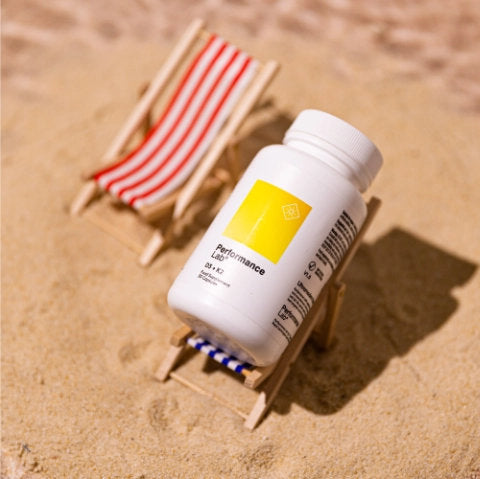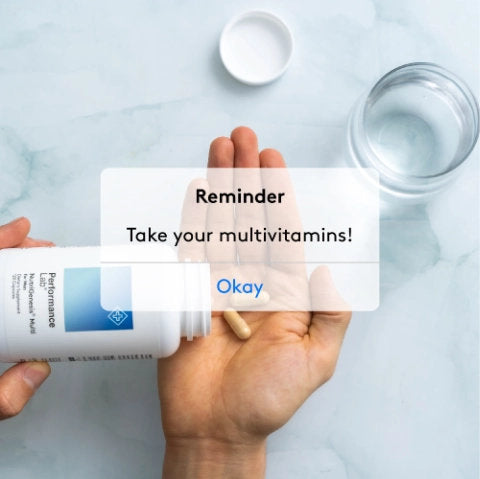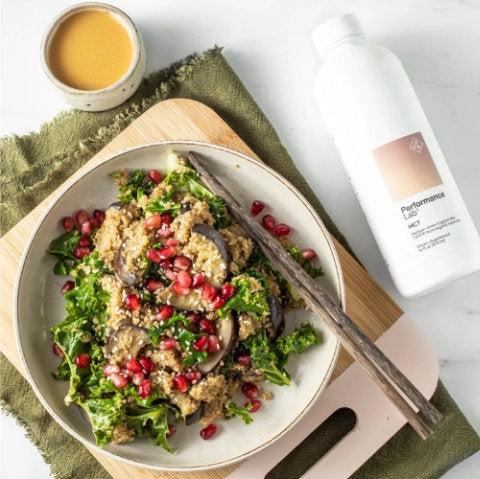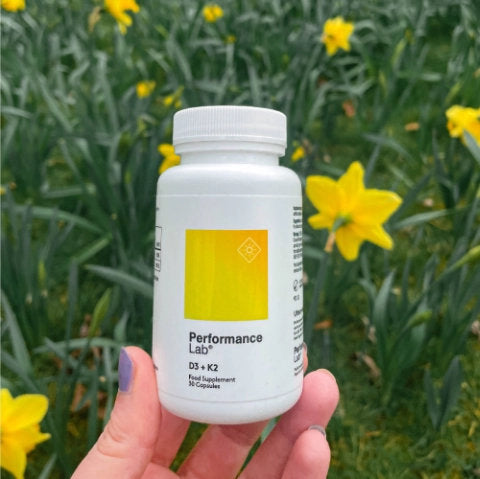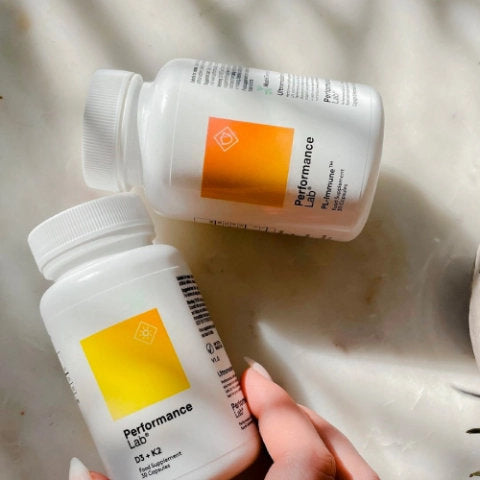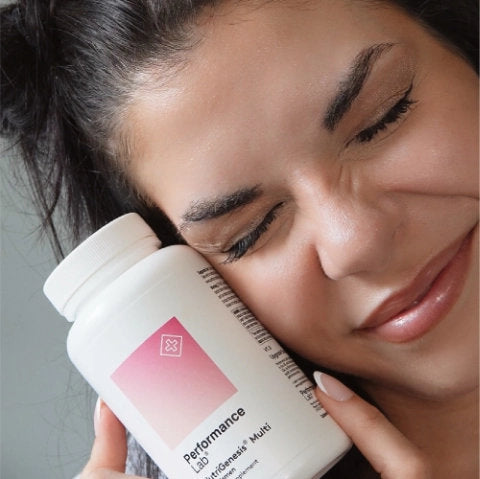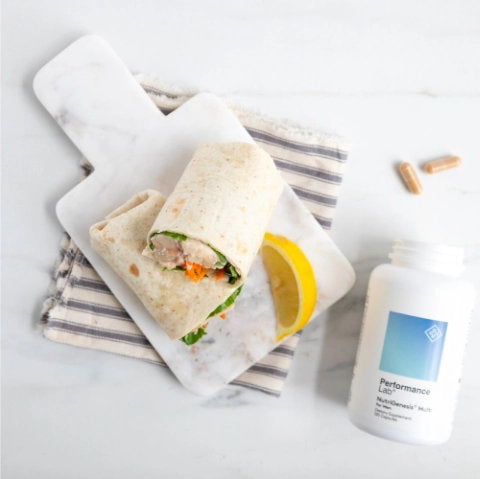Chronic pain in the knees, hips, hands, elbows, shoulders, and any other joint in the body is never ideal—and it’s never pleasant to deal with.
It’s painful, uncomfortable, and at times, can be downright miserable. In most cases, joint pain results from arthritis and inflammation, but at other times, it can result from lifestyle factors like toxins, stress, or food sensitivities.
And while joint issues are common during aging, they don’t have to be. By protecting your joints with nutrients that support the health and production of cartilage, you can save yourself the hassle and pain of dealing with joint problems down the road.
From the classic combination of glucosamine and chondroitin to MSM, turmeric, and Boswellia, we’re covering all the bases on the best joint supplements on the market.
Ready to say goodbye to arthritis pain and joint discomfort for good? Let’s get going through our best joint pain relief supplement list!
What Causes Joint Pain?
We’ve all experienced it. We wake up and roll onto our side, only to be hit with a stabbing, crippling pain as we try to stand. Or maybe you’re trying lunges at the gym but struggling with achy knees.
There’s no denying that joint pain sucks, but while the causes may not always be apparent, certain factors can lead to poor joint health and discomfort.Of the causes, arthritis is the most common.
The two primary forms of arthritis are osteoarthritis (OA) and rheumatoid arthritis (RA). Age is one of the most significant contributors to osteoarthritis in the United States, with an estimated 68% of people over 55 struggling with it 1.
The most common arthritis symptoms include joint pain, stiffness, and mobility or movement restrictions.
On the other hand, the causes of rheumatoid arthritis aren’t known, but research suggests a complex interplay between genotype, environmental triggers, and chance 2.
RA is characterized by synovial inflammation and swelling, autoantibody production, cartilage and bone deterioration, and systemic features, including cardiovascular, pulmonary, psychological, and skeletal disorders 2.
But while arthritis may be a common cause of joint pain and discomfort, it’s not the only one. Some other causes of joint problems include:
- Bursitis (inflammation of the joint capsule)
- Autoimmune conditions
- Gout
- Infections
- Chondromalacia of the patella
- Injury
- Tendonitis
- Joint overuse
- Fibromyalgia
- Osteoporosis
Getting to the root of what’s causing your joint pain is key to reducing and eventually eliminating it.
But rather than loading up on anti-inflammatories, painkillers, and other over-the-counter medications, why not consider something natural?
Plenty of herbs and nutrients support healthy joint function, which can maintain joint health and prevent pain and deterioration—regardless of age.
The Benefits Of Women's Joint Supplements
If you’re looking for a joint supplement, there’s no shortage of them on the market—but finding a high-quality one specific for women can be difficult.
Because women have different needs than men, you don’t want something general. You want something that’s going to optimize joint health and prevent issues down the road.
When choosing the right nutrients, some are more effective than others. But what do joint supplements do?
Here are some of the proven benefits of adding a good joint supplement to your stack:
Reduce inflammation and joint pain
Do you constantly feel stiff, swollen, and achy when you wake up? Are you tired of avoiding certain exercises because they cause pain? Sounds like a bad case of inflammation and pain.
While osteoarthritis and rheumatoid arthritis might be at the root of your pain, other causes can contribute to joint pain and stiffness, impaired mobility, and inflammation.
A good joint supplement will contain natural anti-inflammatories like turmeric, ginger, or Boswellia to help inhibit the production of inflammatory compounds 3. They also relieve joint pain, enhance mobility, and improve joint function by reducing inflammation.
Enhance joint lubrication
Poor joint lubrication is generally one of the signs of osteoarthritis.
Because the condition is characterized by inflammation, there is an increased production of cells within and surrounding the joint that release inflammatory compounds into the synovial fluid, the fluid in the joint capsule that helps to lubricate the joint.
However, the synovial fluid becomes less viscous with osteoarthritis, which means the inflammatory compounds come into direct contact with the sensory neurons that line the joint capsule 4.
The result? A heightened sense of pain.
But when you can reduce the production of inflammatory compounds with powerful anti-inflammatory herbs and nutrients like curcumin or turmeric extracts, glucosamine sulfate, and chondroitin, you can improve synovial fluid levels and significantly reduce pain.
Reduce joint stiffness and improve joint mobility
Are you struggling to move your joints through their full range of motion? If you have limited mobility due to joint pain and stiffness, there is hope.
Although age is a significant factor in the onset of joint stiffness, we also have to consider another major cause—advanced glycation end products (AGEs).
These compounds accumulate from age-related changes in the articular cartilage and are produced from the spontaneous reaction of reducing sugars with proteins 5. They accumulate during chronic inflammation and are often present in people with OA 6.
But how do AGEs contribute to joint deterioration? The modification of AGEs can lead to tissue damage via alteration of the tissue protein structure and function and stimulation of cellular responses mediated by a specific receptor called RAGE 7.
The mechanisms between AGEs and joint destruction are slightly complex, but herbs and nutrients that reduce oxidative stress and inflammation may help prevent the accumulation of AGEs and, therefore, reducing joint stiffness and improving joint mobility.
Best 4 Nutrients For Joint Health
While OTC medications and pain relievers may be your first line of defense against treating arthritis pain and joint discomfort, they might not be the best option.
Because you’re not getting to the root of the problem, it will only come back. Instead, look at natural joint supplements like herbs and nutrients that support healthier joints and pain relief.
But what’s interesting is that research shows that vitamins, minerals, and herbs can do a comparable, if not better, job at supporting joint health—without the nasty side effects!
Let’s take a look at the best female joint supplements.
Glucosamine sulfate and chondroitin
If two ingredients are a staple to any women's joint supplement, it’s glucosamine sulfate and chondroitin.
Together, they form the building blocks of cartilage, the connective tissue that cushions joints, and supplementing with them may help prevent joint deterioration due to natural wear and tear and the pain associated with arthritis.
People with osteoarthritis experience a wearing down of the cartilage between joints, which causes the bones to rub together. Over time, the rubbing of bones can lead to pain and reduced joint function, especially in the knees, hips, hands, and spine 8, 9.
As natural anti-inflammatories, glucosamine sulfate supplements and chondroitin may help reduce pain and slow cartilage degeneration, thereby supporting better musculoskeletal health and helping to repair cartilage.
A 1994 study in Osteoarthritis and Cartilage looked at the effects of glucosamine sulfate in patients with osteoarthritis of the knee and found that it was substantially more effective than the placebo for treating osteoarthritis knee arthritis pain and mobility10.
A similar study also found that supplementing with chondroitin or a glucosamine-chondroitin combination was effective in relieving joint pain 11. But while many clinical studies show benefits for using both compounds, evidence is still mixed on their effects.
That said, there’s another aspect to what these two do—studies find that because they’re critical components in cartilage and synovial fluid, increasing intake may stimulate anabolic processes for cartilage production.
Their potent anti-inflammatory properties may simultaneously reduce catabolic processes in cartilage associated with inflammation 12.
So, on top of relieving chronic joint pain, they may also support cartilage regeneration and a stronger joint structure, leading to less pain and better mobility.
Methylsulfonylmethane (MSM)
If you’ve never heard of methylsulfonylmethane (MSM) before, get familiar with it—it’s one of the best natural compounds for supporting joint health.
MSM is a naturally occurring organosulfur compound with powerful antioxidant and anti-inflammatory properties. Thanks to its ability to penetrate membranes and permeate throughout the body, it’s highly effective for treating joint pain and preventing joint issues in women.
Research finds that MSM has profound effects on reducing inflammation in the body, but it can also inhibit cartilage degeneration—both of these actions help to maintain joint health and mobility 13.
A 2015 study published in the International Journal of Biomedical Science found that treatment with 1,200 mg of MSM for 12 weeks in men and women over 50 with at least one symptom of joint degeneration effectively reduced pain, stiffness, and swelling in the joints 14.
A similar study of people with low-back pain found that a glucosamine supplement containing MSM was effective for relieving lumbar stiffness and pain and improving quality of life 15.
MSM’s ability to do this lies in its inhibitory effect on NF-κB, which downregulates the production of mRNA for interleukin (IL)-1, IL-6, and tumor necrosis factor-α (TNF-α)—all inflammatory markers.
In doing so, it may also reduce the expression of enzymes and cytokines involved in free-radical formation, which, when in excess, can contribute to inflammation 16.
Curcumin
Whether it’s joint pain, muscle recovery, digestion, or allergies, curcumin seems to be the answer.
But where arthritis and joint health are concerned, curcumin is particularly effective. It has powerful anti-inflammatory effects that soothe and protect achy joints.
Turmeric and its derivatives, like curcumin, have potent anti-inflammatory activities that modify NF-κB signaling, proinflammatory cytokines, COX-2, and 5-LOX activity 17.
And because it can modulate the expression of various transcription factors involved in energy metabolism, it may also offer benefits for osteoarthritis, along with conditions like type 2 diabetes and dyslipidemia.
Boswellia serrata
Whether you’ve heard it as Boswellia serrata or Indian Frankincense, this powerful herb packs a punch for joint health.
It’s a gum-resin extract that has been used for centuries for its medicinal properties and treatment of inflammatory conditions.
While Boswellia is packed full of active compounds, it’s four boswellic acids we’re interested in for joint health: β-boswellic acid, acetyl-β-boswellic acid, 11-keto-β-boswellic acid, and acetyl-11-keto-β-boswellic acid 3.
These compounds are primarily responsible for inhibiting pro-inflammatory enzymes, which help curb inflammation. Of the four, acetyl-11-keto-β-boswellic acid offers the most powerful effects on 5-lipoxygenase, an enzyme responsible for inducing inflammation.
A 2003 study published in Phytomedicine looked at the effects of Boswellia serrata Extract (BSE) in 30 patients with osteoarthritis of the knee 18. Fifteen received 333 mg of BSE, while the other half received a placebo for eight weeks.
At the end of the study period, all patients receiving reported decreased knee pain, increased knee flexion, and increased walking distance. Other studies show similar results, with BSE reducing pain and improving physical functioning in patients with osteoarthritis 19.
Other Tips For Improving Joint Health
Exercise regularly
Many people worry that exercise may exacerbate joint issues, but as the old saying goes, “motion is lotion.”
If you want to protect your joints and keep them mobile, exercise regularly! Staying active can reduce joint pain and stiffness, mitigate inflammation, and help protect against cartilage degeneration 20.
Eat anti-inflammatory foods
Chronic inflammation underlies many health conditions, including arthritis and joint pain.
Eating a diet high in inflammatory foods—grains, dairy, sugar, processed oils, etc.–increases the risk of inflammation, but eating a diet high in anti-inflammatory foods helps to fight inflammation in the body, including in the joints.
Try adding these to your diet:
- Leafy green vegetables (kale, spinach, collards, broccoli)
- Berries
- Nuts (almonds, walnuts)
- Cold-water fatty fish (salmon, sardines, mackerel, herring)
- Olive oil
- Avocados
- Dark chocolate and cacao
- Tomatoes
- Maintain a healthy weight
Being overweight can increase your risk for several conditions, but it’s also considered a primary risk factor for osteoarthritis 21.
Carrying around extra weight stresses weight-bearing joints like the back, knees, hips, and ankles, which increases wear and tear and the risk of cartilage degeneration.
A 2015 systematic review found that knee osteoarthritis risk increases by a whopping 35% with just a 5 kg/m2 rise in BMI 22. So, if you want to keep your joints healthy and pain-free, maintain a healthy weight for your body - and active lifestyles are part of that.
Stay hydrated
Although you may not associate hydration with joint pain, your body needs water to make synovial fluid, which lubricates your joints and protects them from excess wear and tear.
But how much water do you need? Take your body weight in pounds and divide it in half—that’s the minimum amount of water you need in ounces.
Fill in the gaps with joint health supplements
Looking for even more protection? Consider a joint supplement like Performance Lab Flex®. It’s loaded with the most effective and pure joint-supporting compounds you can use.

Flex soothes and protects achy joints with easy-on-the-stomach botanicals AprèsFlex® Boswellia serrata and CurcuWIN® curcumin, but also lubricates and nourishes joints with Phytodroitin™, OptiMSM® and corn glucosamine for long-lasting joint flexibility and comfort.
References
- Elders MJ. The increasing impact of arthritis on public health. J Rheumatol Suppl. 2000;60:6-8.
- McInnes IB, Schett G. The pathogenesis of rheumatoid arthritis. N Engl J Med. 2011;365(23):2205-2219.
- Siddiqui MZ. Boswellia serrata, a potential antiinflammatory agent: an overview. Indian J Pharm Sci. 2011;73(3):255-261.
- Chakrabarti S, Jadon DR, Bulmer DC, Smith ESJ. Human osteoarthritic synovial fluid increases excitability of mouse dorsal root ganglion sensory neurons: an in-vitro translational model to study arthritic pain. Rheumatology (Oxford). 2020;59(3):662-667.
- de Groot L, Hinkema H, Westra J, et al. Advanced glycation endproducts are increased in rheumatoid arthritis patients with controlled disease. Arthritis Res Ther. 2011;13(6):R205.
- DeGroot J, Bank RA, Bijlsma JWJ, TeKoppele JM, Verzijl N, Lafeber F. Advanced glycation endproducts in the development of osteoarthritis. Arthritis Res Ther. 2004;6(Suppl 3):78.
- Drinda S, Franke S, Canet CC, et al. Identification of the advanced glycation end products N(epsilon)-carboxymethyllysine in the synovial tissue of patients with rheumatoid arthritis. Ann Rheum Dis. 2002;61(6):488-492.
- Chang LR, Marston G, Martin A. Anatomy, Cartilage. . In: StatPearls . Treasure Island (FL): StatPearls Publishing; 2022 Jan-. Available from: https://www.ncbi.nlm.nih.gov/books/NBK532964/
- Sen R, Hurley JA. Osteoarthritis. . In: StatPearls . Treasure Island (FL): StatPearls Publishing; 2022 Jan-. Available from: https://www.ncbi.nlm.nih.gov/books/NBK482326/
- Noack W, Fischer M, Förster KK, Rovati LC, Setnikar I. Glucosamine sulfate in osteoarthritis of the knee. Osteoarthritis Cartilage. 1994;2(1):51-59.
- Singh JA, Noorbaloochi S, MacDonald R, Maxwell LJ. Chondroitin for osteoarthritis. Cochrane Database Syst Rev. 2015;1(1):CD005614.
- Jerosch J. Effects of Glucosamine and Chondroitin Sulfate on Cartilage Metabolism in OA: Outlook on Other Nutrient Partners Especially Omega-3 Fatty Acids. Int J Rheumatol. 2011;2011:969012.
- Ezaki J, Hashimoto M, Hosokawa Y, Ishimi Y. Assessment of safety and efficacy of methylsulfonylmethane on bone and knee joints in osteoarthritis animal model. J Bone Miner Metab. 2013;31(1):16-25.
- Xu G, Zhou T, Gu Y, et al. Evaluation of the Effect of Mega MSM on Improving Joint Function in Populations Experiencing Joint Degeneration. Int J Biomed Sci. 2015;11(2):54-60.
- Tant L, Gillard B, Appelboom T. Open-label, randomized, controlled pilot study of the effects of a glucosamine complex on Low back pain. Curr Ther Res Clin Exp. 2005;66(6):511-521.
- Butawan M, Benjamin RL, Bloomer RJ. Methylsulfonylmethane: Applications and Safety of a Novel Dietary Supplement. Nutrients. 2017;9(3):290.
- Daily JW, Yang M, Park S. Efficacy of Turmeric Extracts and Curcumin for Alleviating the Symptoms of Joint Arthritis: A Systematic Review and Meta-Analysis of Randomized Clinical Trials. J Med Food. 2016;19(8):717-729.
- Kimmatkar N, Thawani V, Hingorani L, Khiyani R. Efficacy and tolerability of Boswellia serrata extract in treatment of osteoarthritis of knee--a randomized double blind placebo controlled trial. Phytomedicine. 2003;10(1):3-7.
- Sengupta K, Alluri KV, Satish AR, et al. A double blind, randomized, placebo controlled study of the efficacy and safety of 5-Loxin for treatment of osteoarthritis of the knee. Arthritis Res Ther. 2008;10(4):R85.
- Zeng CY, Zhang ZR, Tang ZM, Hua FZ. Benefits and Mechanisms of Exercise Training for Knee Osteoarthritis. Front Physiol. 2021;12:794062.
- Jin X, Gibson AA, Gale J, et al. Does weight loss reduce the incidence of total knee and hip replacement for osteoarthritis?-A prospective cohort study among middle-aged and older adults with overweight or obesity. Int J Obes (Lond). 2021;45(8):1696-1704.
- Zheng H, Chen C. Body mass index and risk of knee osteoarthritis: systematic review and meta-analysis of prospective studies. BMJ Open. 2015;5(12):e007568.





